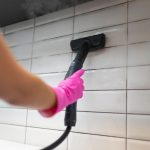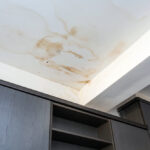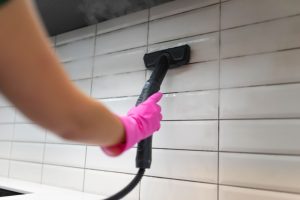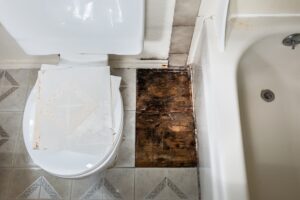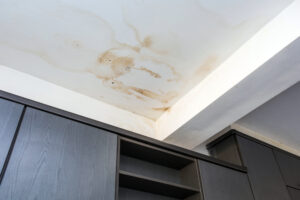Ever wondered how long it takes to dry a house after a flood?
Water damage can come from many sources like bad weather, leaky pipes, or broken appliances. These issues can cause big problems for homeowners. The CDC says buildings should be cleaned within 24 to 48 hours to stop mold.
It usually takes 72 hours for a room to dry completely under the best conditions. But, a whole house might take much longer. This depends on the materials used, the house size, and how much water got in.
Starting the drying process can take at least 12 hours. But, it can take weeks or even months for some materials like drywall. It can take 3 to 5 days for drywall to dry after water damage. We’ll look at the basics of water damage and drying times in this section.
Key Takeaways
- Immediate cleaning within 24 to 48 hours can significantly prevent mold growth.
- Initiating the drying process typically takes at least 12 hours after flooding.
- Flooding can necessitate specialized flood insurance policies, often separate from standard homeowner’s insurance.
- The effectiveness of drying is heavily influenced by the materials used in the house and the drying techniques employed.
- Utilizing professional-grade dehumidifiers and air movers can accelerate drying times.
- Improper management of water damage can lead to more extensive, costly repairs.
- Continuous dehumidifier use and heated air circulation can significantly reduce drying times.
Factors Affecting Flooded House Drying Time
The time it takes to dry a flooded house depends on several factors. The size of the house is a big factor. Larger houses take longer to dry than smaller ones.
Building materials also matter. For example, houses with dense materials like hardwood dry slower.
The type and extent of water damage also affect drying time. Clean water, like Category 1, dries faster. But contaminated water, like Categories 2 and 3, makes drying harder and longer.
Local climate and environmental conditions also play a role. Places with high humidity dry slower. Quick action after flooding helps reduce damage and shortens drying time.
Using the right drying methods is key. Techniques like positive pressure drying work well in well-ventilated areas. Dehumidifiers and fans are also important, helping in humid climates. Powerful equipment, like truck-mounted systems, helps remove water fast.
- Larger homes typically take longer to dry compared to smaller homes.
- Dense materials like hardwood may extend drying time.
- Category 1 water results in quicker drying compared to Categories 2 and 3.
- Humidity and local climate conditions greatly influence the drying duration.
- Immediate response to flooding can significantly reduce drying time.
Knowing these factors is important for homeowners and restoration teams. Using dehumidifiers and ensuring good ventilation helps control moisture. Keeping temperatures between 20°C and 22°C is best for drying. Moisture meters help find hidden moisture and prevent mold.
By understanding and managing these factors, drying flooded houses can be done more efficiently. This reduces damage and health risks.
How long does it take for a flooded house to dry out?
The time it takes for a flooded house to dry out varies a lot. It depends on how much water damage there is and how well the drying methods work. A small room might dry in 72 hours, but bigger spaces or homes with a lot of damage could take weeks.
Using high-powered fans and heating systems helps dry the house faster. Keeping the indoor temperature around 80 degrees Fahrenheit can speed up drying. But, it’s important to keep humidity levels low to stop mold from growing. Dehumidifiers are great at lowering air moisture, helping the house dry quicker. Yet, they work less well in cold, humid, or cloudy weather.
Professional water damage restoration services use top-notch equipment to remove water fast and well. They might use submersible pumps, wet/dry vacuums, and special carpet cleaning machines. With fans and dehumidifiers, these tools can cut down drying times a lot.
Walls and floors usually take longer to dry than the first 72 hours for a single room. Walls might need several days to weeks to dry, depending on the weather, how wet they were, and the drying methods used. Using portable heaters with fans is a good way to help dry out wet areas faster.
The time it takes for a flooded house to dry out can vary a lot. It depends on many things, like the weather and if there are air circulation systems. Homeowners should be ready for different drying times. Using professional equipment and services is key to fixing water damage well and fast.
Conclusion
The time it takes to dry a flooded house depends on many factors. Water damage affects about 14,000 people in the U.S. every day. This shows how common and urgent it is to fix these problems quickly.
Under the best conditions, a room can dry in 72 hours. But, if the flooding is severe, it might take weeks. This depends on the materials affected and the drying methods used.
Using powerful fans and dehumidifiers helps dry a room faster. It’s also important to watch humidity levels and use heaters or desiccants. The first 48 hours are key to stop mold and save personal items.
Getting a flooded house dry depends on acting fast and using the right methods. Homeowners should call certified restoration services for help. This ensures the damage is fixed well, keeping the house safe and healthy.







